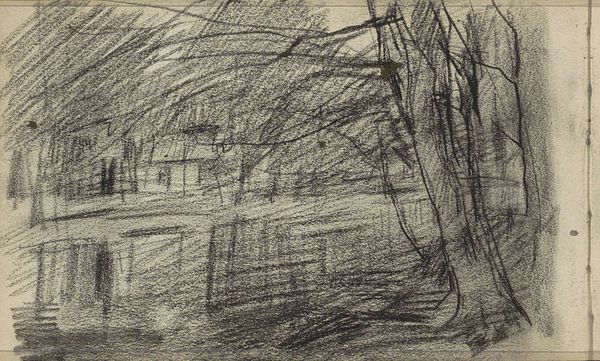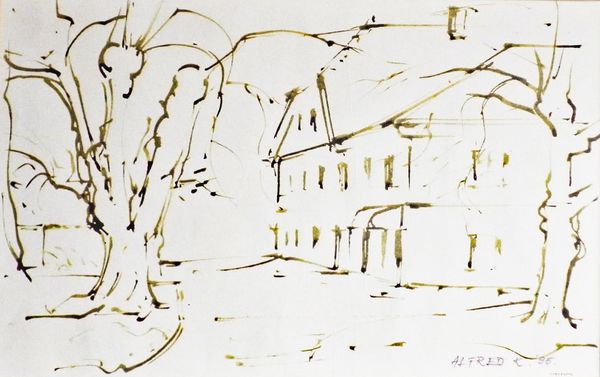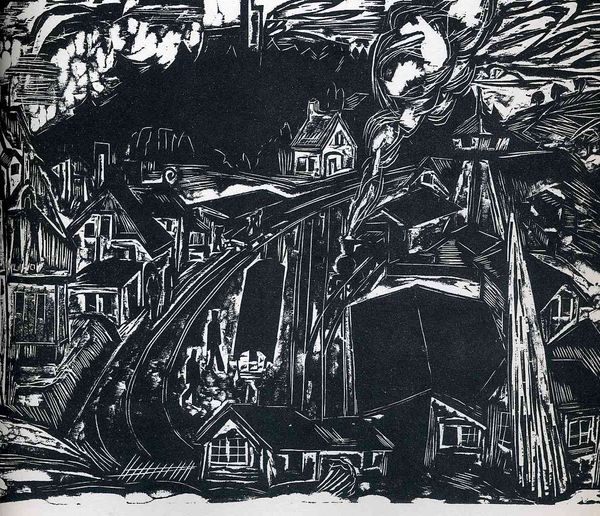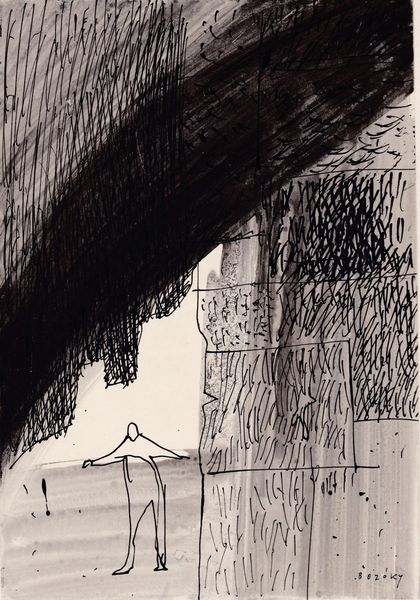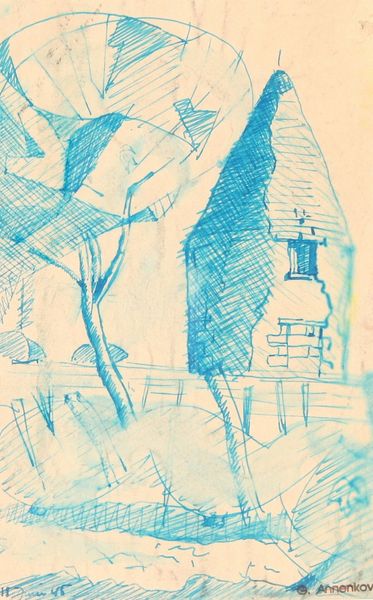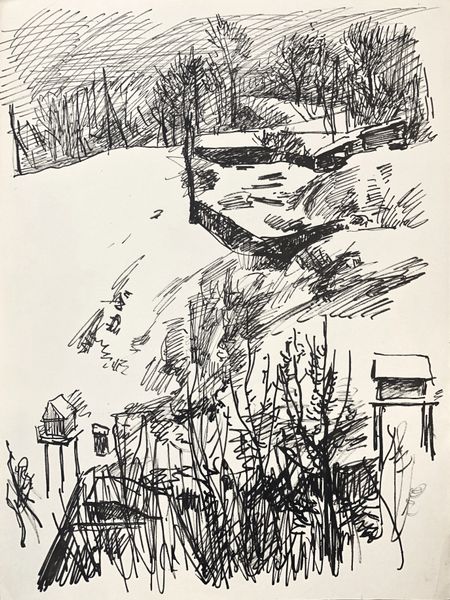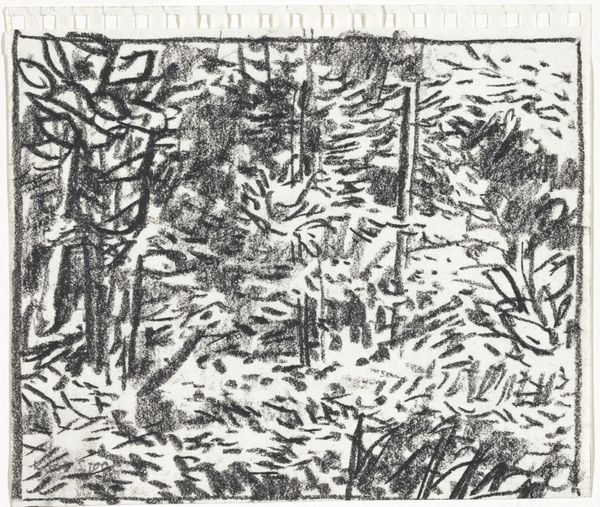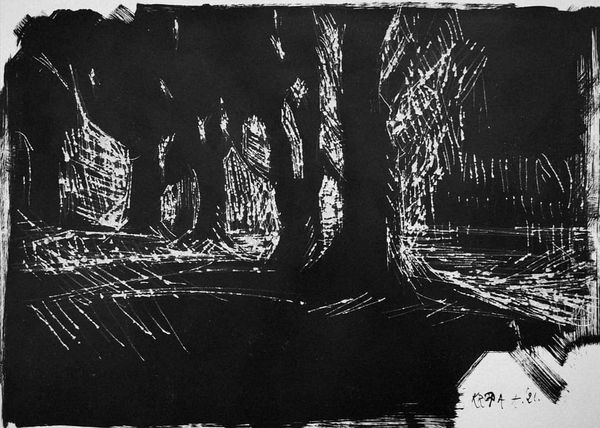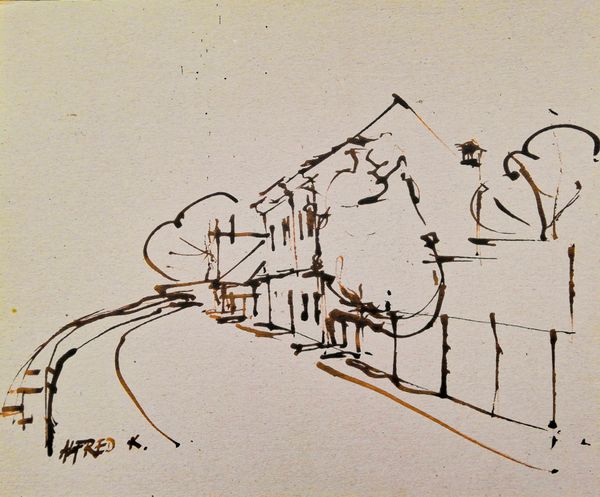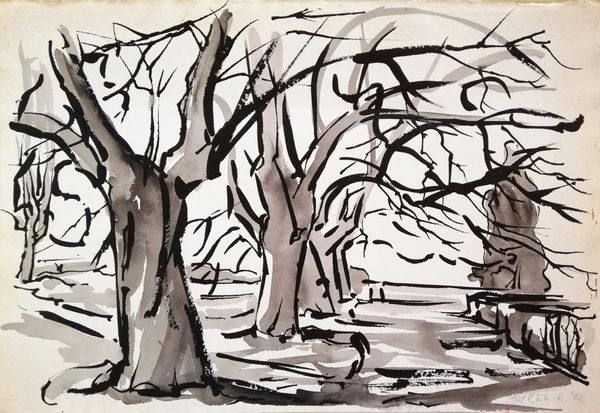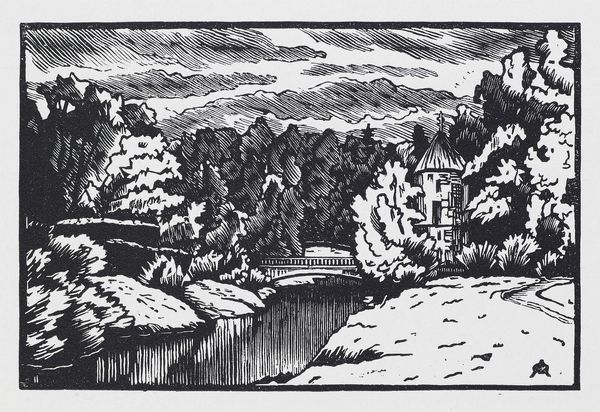
Gajeva street in Karlovac (A view from the park near the main postal building) 1992
0:00
0:00
drawing, ink
#
drawing
#
ink drawing
#
ink
#
linocut print
#
cityscape
#
monochrome
Dimensions: 50 x 70 cm
Copyright: Creative Commons NonCommercial
Editor: This ink drawing is titled "Gajeva Street in Karlovac" by Alfred Freddy Krupa, created in 1992. It's so stark, almost aggressively monochrome. The high contrast and bold lines make it feel very immediate and almost abstract, though I know it is representational. What is your take on the composition of this cityscape? Curator: Precisely. The effectiveness of this piece stems from its formal arrangement. The sharp delineation between black and white flattens the image, emphasizing the two-dimensional surface. Consider the interplay between positive and negative space. The dense black areas, primarily representing foliage, are counterbalanced by the white spaces defining the buildings and sky. This creates a dynamic tension, doesn't it? Editor: Yes, definitely! The buildings almost emerge from the darkness, as opposed to the more traditional foreground-background relationship. How intentional do you think this push and pull was? Curator: Highly intentional, I'd argue. Notice how Krupa uses varied line weights and densities to further articulate depth and form. Thicker lines give weight to the foreground elements, while thinner, sparser lines suggest recession. It is also noteworthy that we're experiencing the composition from behind a grove of trees and the street/buildings almost serve as a canvas revealed through an open space in those trees. Editor: I see it now, it gives an amazing effect! Almost like the architecture becomes a sort of living art itself, like it is nature. I'm amazed by how much you can find by simply examining the artist's choices with line and space. Thanks so much. Curator: Indeed. Focusing on these fundamental elements allows us to understand how the artist manipulates form to communicate meaning, irrespective of external context. A valuable skill for any budding art historian.
Comments
No comments
Be the first to comment and join the conversation on the ultimate creative platform.
